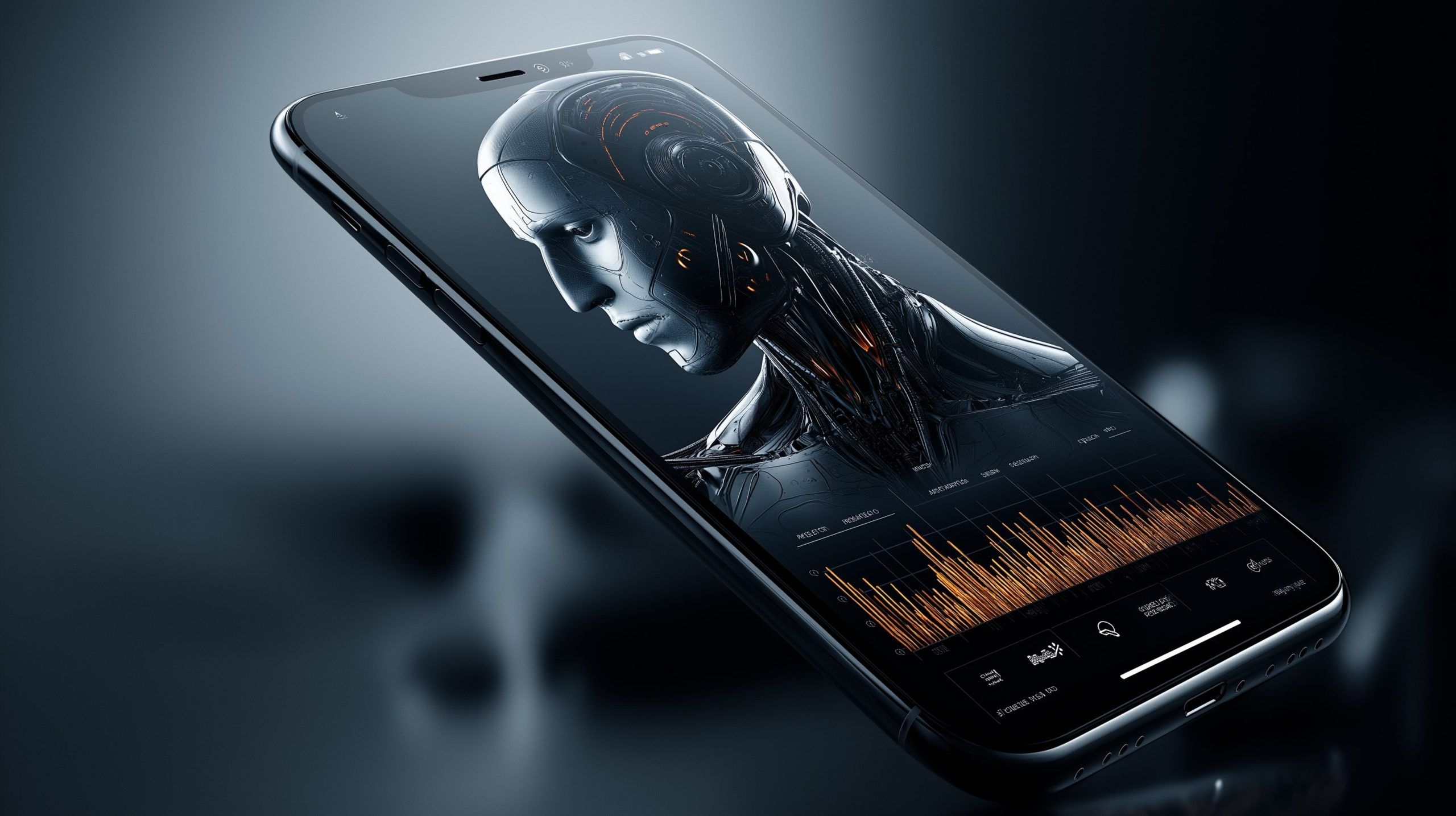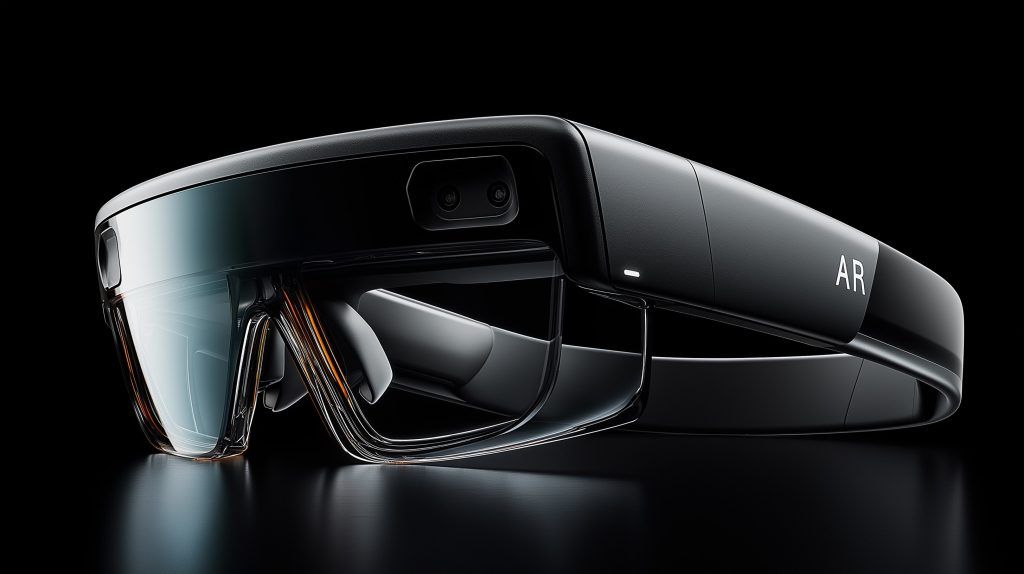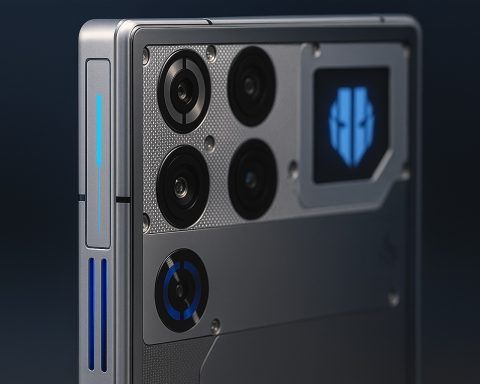- At WWDC 2024, Apple unveiled Apple Intelligence, embedding AI across iOS with on-device processing via the Neural Engine and a Private Cloud Compute option for encrypted server-based tasks.
- Apple’s Siri gained context awareness, hundreds of new actions across apps, and on-screen context integration.
- Apple integrated OpenAI’s ChatGPT into iOS 18, enabling Siri to route complex queries to ChatGPT with user permission.
- Pages’ Writing Tools can generate text and images using ChatGPT-powered features, including a Compose tool to create content.
- Image Playground enables on-device image generation in Messages, Notes, and other apps, with all images created on-device.
- Genmoji allows generating custom emojis from text prompts or photos, usable as emojis or stickers.
- Photos app AI upgrades include natural-language search, a Clean Up background removal tool, and Memories that crafts a storyline and mini-movie entirely on-device.
- Notes and Phone apps can record audio, generate transcripts, and Apple Intelligence can summarize conversations into bullet-point recaps, with call recording limited to regions where it’s legal.
- Google introduced Gemini on-device with Gemini Nano in Pixel 8/9, making Android the first mobile OS with a built-in on-device foundation model.
- Circle to Search, co-developed with Samsung, lets users circle on-screen content to trigger AI-powered searches and translations.
Introduction: Smartphones Enter the AI Arms Race
Artificial intelligence has become the new battleground for smartphones. In 2024 and 2025, all major phone makers – from Apple and Google to Samsung, Xiaomi, and beyond – are touting AI-powered features as key selling points for their latest devices [1] [2]. The hype around generative AI (sparked by tools like ChatGPT) has pushed mobile giants to integrate AI into everything from photography and translation to personal assistants and productivity.
- AI mentions everywhere: Samsung’s launch events now drop the term “AI” dozens of times [3], Google’s Android updates put AI “front and center,” and Apple’s new “Apple Intelligence” suite headlines the latest iPhones [4].
- On-device vs. cloud: Some AI tasks run on your phone’s neural chips for speed and privacy, while others tap powerful cloud models (like OpenAI’s GPT-4 or Google’s Gemini) for heavy lifting. This embedded-vs-cloud balance is a major theme across ecosystems, influencing how fast, capable, and private these features are.
- Why now? Tech executives say we’re at an inflection point: chips are finally fast enough to handle advanced AI on the go, and consumer demand for smarter, more helpful phones is rising [5] [6]. As one analyst put it, “AI-capable smartphones are emerging as the new growth engine… projected to comprise 9% of shipments in 2024, rapidly increasing to 54% by 2028” [7]. In short, an AI revolution is unfolding in our pockets, and every brand is vying to lead the charge.
Apple: “Apple Intelligence” and the On‑Device AI Advantage
Apple took a characteristically privacy-centric and hardware-driven approach to the smartphone AI wave. At WWDC 2024, Apple unveiled its long-awaited AI strategy under the banner “Apple Intelligence,” baking new AI smarts throughout iOS, from Siri to the camera [8]. Key highlights of Apple’s approach include:
- Privacy-first AI: Apple leans heavily on on-device processing via its Neural Engine, keeping personal data private. “A cornerstone of Apple Intelligence is on-device processing, and many models run entirely on device,” the company says [9]. When more horsepower is needed, Apple uses “Private Cloud Compute” – sending data to Apple’s servers with end-to-end encryption and no retention [10] [11]. This means features like image generation and text analysis can “flex and scale” in the cloud without compromising privacy. Independent experts can even audit Apple’s server code to verify no data leaks [12].
- Siri’s evolution: Siri is finally getting smarter and more capable after years of stagnation. Powered by Apple Intelligence, Siri can now understand context better, handle back-to-back questions, and even be controlled via text input [13] [14]. It can perform “hundreds of new actions” across apps – e.g. “Bring up that article about cicadas from my Reading List” or “Send the photos from Saturday’s barbecue to Malia”, and Siri will fetch or execute it. Importantly, Siri now taps into on-screen context: if a friend texts you an address, you can say “Add this to my contacts” and Siri knows what “this” refers to [15]. For device support, Siri answers thousands of “How do I…?” questions about iPhone settings and usage [16], effectively acting as a tech tutor.
- Generative AI via ChatGPT: In a surprising move, Apple is integrating OpenAI’s ChatGPT directly into iOS 18. This allows Siri to “phone a friend” (with permission) for complex queries [17] [18]. If you ask something beyond Siri’s built-in knowledge – say, planning a 5-course meal or an obscure trivia – Siri will politely ask if you want help from ChatGPT, then send the query (and any relevant content like a photo or document) to ChatGPT and present the answer right within Siri [19] [20]. “When a user grants permission, Siri can tap into ChatGPT’s broad world knowledge and present an answer directly,” Apple explains [21] [22]. This effectively gives iPhone users on-demand access to one of the world’s most powerful AI models, without having to open a separate app. (Notably, Apple ensures you know and consent to what data is sent out [23].) Apple also built ChatGPT into its new Writing Tools – for instance, you can use the “Compose” feature in Pages to generate text or even create an image in various styles to accompany your writing [24] [25].
- Creative and handy features: Apple Intelligence powers a slew of user-facing features:
- Image Playground: an on-device image generator built into Messages, Notes, and other apps. You can type a prompt, choose a style (Animation, Illustration, or Sketch), even include someone from your photos, and it will create a fun image in seconds – all locally on your device [26] [27]. Apple emphasizes “all images are created on device, giving users the freedom to experiment as much as they want” [28].
- Genmoji: Apple’s twist on emoji – just describe an idea (“smiley relaxing with cucumber slices”) or even base it on a person’s photo, and it will generate a custom emoji for you [29] [30]. These Genmoji can be used like regular emojis or stickers, adding a personalized flair to messages.
- Photos app upgrades: Using language understanding, you can now search your photos and videos with natural phrases – e.g. “Maya skateboarding in a tie-dye shirt” finds that exact shot [31]. There’s a new “Clean Up” tool that uses AI to remove distracting background objects without nuking the main subject [32] (similar to Google’s Magic Eraser). And an upgraded Memories feature lets you simply describe a storyline (say, “NYC trip with food and museum highlights”); Apple’s AI will then pick out your best relevant photos/videos, “craft a storyline with chapters,” and stitch together a mini-movie with music [33] [34] – all on-device and private [35].
- Audio and calls: In the Notes app and even the Phone app, you can record audio and get an instant transcript and summary of the recording [36]. After a long meeting or call, Apple Intelligence will generate a bullet-point recap to recall key points [37]. (Call recording is limited to regions where it’s legal [38].)
Apple’s big bet is that tightly integrating these AI features into the iPhone – and doing it in a privacy-preserving way – will enhance the user experience without the creepiness. Early reactions are mixed. Analysts at Forrester noted that Apple’s updates “bring Apple level with, but not above, where its peers are” [39]. Indeed, many of these features resemble what Google and others have offered (Apple’s new Clean Up tool, for example, is “similar to Google’s Magic Eraser” on Pixel phones [40] [41]). And Apple stumbled out of the gate with some bugs: its AI news summary feature mis-attributed quotes to major outlets like the BBC, forcing Apple to pull the feature until it could be fixed [42] [43].
Perhaps the toughest challenge for Apple is convincing users to actually use these AI features. A recent survey found 73% of iPhone users felt the new AI features (Apple Intelligence) added “little to no value” to their experience [44] [45]. Many haven’t even tried them – only ~42% of eligible iPhone owners have dabbled with the AI tools so far [46] [47]. This may be due to the slow, staggered rollout (iOS 18 and Apple Intelligence didn’t even ship on day one with iPhone 16, and many users haven’t upgraded software yet [48]) or simply because Siri has a reputation for being underwhelming. “Ultimately, I think AI just isn’t interesting to the everyday iPhone user… I’ve yet to see an AI feature that doesn’t look like a chore to use,” one TechRadar reviewer opined [49] [50]. Still, Apple is optimistic that will change. It expects AI-driven demand to spur a significant upgrade cycle – projecting a 10% bump in iPhone sales thanks to Apple Intelligence [51] [52]. And tellingly, Apple is limiting some AI capabilities to its newest, most powerful models (only the A17 Pro-powered iPhone 15 Pro/Max and beyond can run all features) [53], nudging power users to buy the latest hardware for the full AI experience.
Google & Pixel: Android Gets Generative – Both On-Device and In-Cloud
Google has been infusing its phones and Android OS with AI for years (think Google Assistant, Pixel’s famed camera algorithms, and features like live transcription). But in 2024, Google turned the dial to 11 with generative AI and large language models – namely its new Gemini AI – becoming core to the Android experience.
- Assistant with Bard/Gemini: Google is effectively merging Google Assistant with its Bard chatbot (now rebranded “Gemini”), aiming to create a next-gen voice assistant infused with generative smarts. At its Pixel 8 launch, Google demoed “Assistant with Bard,” a revamp that combines Assistant’s device control skills with Bard’s powerful reasoning and creativity [54] [55]. For example, this new Assistant can draft emails, summarize threads, plan trips, or have back-and-forth conversations far beyond classic Assistant. While as of mid-2024 this feature is in development (and slated to roll out in 2024-25), Google clearly signaled that the future of Google Assistant is a GPT-style AI that you can talk to on your phone. In fact, Google quietly started replacing some Assistant functions with Gemini behind the scenes for testers [56]. The strategy is to leverage Google’s strongest asset – its advanced LLMs – to leapfrog Siri and Alexa in usefulness.
- Gemini everywhere: Google’s entire AI ecosystem has been unified under the Gemini name. Originally known as Bard, Gemini now comes in multiple sizes: Gemini Nano (a compact model that runs on devices), Gemini Pro (powers the cloud chat at gemini.google.com), and Gemini Ultra (an even more powerful version still in research) [57]. Pixel 8 and Pixel 9 series devices are the first to have Gemini integrated on-device. In fact, Google boasts that Android is “the first mobile OS with a built-in, on-device foundation model.” Starting with Pixel phones, Gemini Nano is embedded in Android to enable new offline capabilities [58] [59]. This on-device model is multimodal, meaning it can understand text, images you show it, and even sounds – all without sending data to the cloud [60]. For example, Google’s TalkBack accessibility feature will use Gemini Nano to describe images to blind users entirely offline (no network required) [61]. And a forthcoming safety feature will use Gemini on-device to detect scam call phrases in real time (e.g. if someone pretending to be a bank asks for your PIN) and warn the user during the call [62]. Google emphasizes these on-device uses “happen quickly and even work with no network connection,” highlighting the speed/privacy benefit [63] [64].
- Android’s new AI tricks: With these models in place, Android 14/15 on Pixel phones introduced a trove of AI features:
- “Gemini” Assistant overlay: You can now summon a Gemini overlay on top of any app to help with what you’re doing [65]. For instance, if you’re writing a message or email, you can bring up the AI to generate text or images and drag-and-drop the AI’s output directly into your app [66]. Watching a YouTube video? A feature called “Ask this video” lets the AI analyze the video and answer questions about it on the spot [67]. Dealing with a PDF on mobile? If you have Gemini Advanced (a premium tier), you can use “Ask this PDF” to query a document without scrolling through it [68] [69]. These context-aware assistance features are rolling out to “hundreds of millions” of Android devices (Pixel and Samsung) over a few months [70] [71].
- “Circle to Search”: Co-developed with Samsung, this is a magical time-saver. By drawing a circle or lasso around anything on your screen, you trigger an AI-powered search on that content [72]. Circle a photo of a landmark, and Google will identify it and give info (or shopping links if it’s a product) [73] [74]. Circle text, and it will search that text. This feature, built into Pixel phones and Galaxy devices, means no more copy-paste or app switching – you just circle what you want to know more about. Initially launched on Samsung, it’s now on Pixel and expanding widely [75] [76]. Google even added full-screen translation via Circle to Search, letting you translate entire screens of foreign text with a gesture [77] [78].
- Recorder Summaries: Google’s Recorder app, already beloved for live transcription, now goes further. On Pixel devices with Gemini, you can open any voice recording, tap “Transcript” then “Summarize,” and get a concise bullet-point summary of the conversation [79] [80]. All of this happens on-device. It’s perfect for reviewing meeting notes or class lectures in seconds.
- Smart Reply and Writing Aid: The Gboard keyboard on Android now has an AI-powered “smart reply” that can suggest context-aware responses in messaging apps (initially limited to US English and certain apps) [81]. More generally, Pixel’s keyboard has a “tone and rewrite” assist (AI Writing Assist) – similar to Microsoft’s tone adjust in SwiftKey – that can take what you’ve typed and make it more professional, casual, or add emojis/hashtags as needed [82] [83]. This was introduced on the Galaxy S24 Ultra and refined on Pixel. It essentially acts like a mini copyeditor living in your keyboard.
- AI Wallpapers: Android 14 brought a fun feature: AI-generated wallpapers. Users can prompt the phone to create wallpaper images based on themes or styles, producing unique backgrounds (some convincing, some intentionally surreal) [84]. This will come to many Android models as they adopt Android 14+ [85].
- Magic Editor & Photo Tools: Google’s Pixels have been known for computational photography, and AI keeps pushing it. The Magic Editor tool (launched on Pixel 8/9) lets you tap on an object in a photo and then freely reposition it or remove it – the AI fills in the background seamlessly [86] [87]. Want a person closer together in a group shot, or want that stray tourist gone from your pic? Magic Editor does it in a tap, with results that reviewers call “genuinely impressive.” [88] [89] Google’s photo AI can also swap faces in group photos to eliminate blinks (the “Best Take” feature, which uses shots taken in succession to composite an optimal photo) [90]. And for video, Google launched Video Boost, which uploads your video clip to the cloud and applies AI processing to dramatically enhance colors, lighting, and quality [91]. This one does require cloud computing – Google’s servers do the heavy lifting to make your 30fps video look like it was shot in higher quality [92] [93]. It’s a prime example of embedded vs cloud: your phone sends data to a Google AI cloud to get a result that the on-device chip alone couldn’t achieve.
- Performance and AI hardware: Google’s current flagship chip (Tensor G3/G4 series) is designed with AI in mind, but even so, on-device models are relatively small compared to cloud behemoths. That’s why Google’s approach is hybrid. Many tasks (like Recorder summaries, image recognition for search, etc.) can leverage Gemini Nano on the device for instant response [94] [95]. But for more complex tasks (chatting with the full power of an LLM or heavy-duty image/video processing), Google relies on Gemini Pro/Advanced in the cloud. The integration is fairly seamless – e.g., Pixel’s UI will just indicate when it’s using a “Google AI” feature that might send data to the cloud. Google’s emphasis is that whether local or cloud, the AI is there to assist you across apps. “We’re just getting started with how on-device AI can change what your phone can do… and will continue building Google AI into every part of the smartphone experience with Pixel, Samsung and more,” Google stated [96]. Expect future Pixels to double down on beefier AI silicon so that more can be done offline. (Qualcomm, which powers many Androids, claims its latest Snapdragon 8 Gen 3 chip can run LLMs up to 10 billion parameters on-device, at 20 tokens per second, which opens the door to basic GPT-3-class models running locally [97] [98].)
- User reactions: Pixel owners and Android users have generally embraced features like Call Screen, Magic Eraser, and Recorder summaries as practical wins – these solve real problems (avoiding spam calls, fixing photos) in everyday life. However, broader surveys show Android users are similarly skeptical about the “AI” label as iPhone users. In the same SellCell survey, 87% of Samsung Galaxy users said the AI features on their phone added little or no value to their experience [99] [100]. Only about 47% of Galaxy users had even tried their phone’s AI features so far [101] [102]. This suggests that many Android users outside the tech enthusiast crowd aren’t rushing to use new AI tricks, either because they don’t know how, don’t see the need, or find them gimmicky. Google will have to demonstrate clear benefits (saving time, having fun, or getting something done easier) to win over the masses.
Samsung: Galaxy AI and the Quest to One-Up Google
As the world’s biggest Android phone maker, Samsung is in a unique position. It relies on Google’s Android platform and services, yet it also wants to differentiate and add its own value – especially in markets where Google’s services are restricted (China, etc.). In 2024–2025, Samsung has been loudly marketing “Galaxy AI” as its umbrella for new features, while forging partnerships to incorporate third-party AI (mainly Google’s) into Galaxy devices.
- Galaxy AI features: Debuting with the Galaxy S24 series in early 2024, Samsung’s “Galaxy AI” suite introduced a range of tools:
- Real-Time Voice Translation: In calls or face-to-face, Galaxy phones can now translate speech on the fly. Samsung showed off a demo of two people speaking different languages on a phone call with the phone translating each side in real time [103]. This is powered by Google’s generative AI language models (Gemini) under the hood [104] – a collaboration between Samsung and Google. It essentially gives Galaxy users a Babel Fish for calls, supporting many languages.
- Voice Recorder Summaries: Similar to Pixel, Samsung’s built-in Voice Recorder app can transcribe and then summarize audio recordings with a tap [105] [106]. If you record a meeting, you’ll get a succinct synopsis thanks to AI.
- Handwriting-to-text magic: Using the S Pen stylus on the S24 Ultra, Samsung unveiled an AI that can tidy up your handwriting and even add punctuation to your scribbles [107] [108]. This “neatening” of notes helps bridge the gap between natural writing and digital text.
- AI Photo Editing: The S24 series camera software heavily leverages AI. Samsung says AI improves low-light photos (brightening and reducing noise), enhances zoom quality, and even identifies blemishes or unwanted objects so you can remove them easily [109]. The Gallery app now has an Object Eraser and a new generative fill/expand feature – you can delete or move objects in a photo, and the app will “generate” missing background or even expand the scene if you cropped too tightly [110] [111]. It also introduced AI-based “Instant Photo Remaster” and an “Instant Slow-mo” feature that can take a normal 30fps video and algorithmically create additional frames to output a smooth slow-motion clip [112].
- AI Live Translate: Built into the system (and even the phone app), Live Translate for calls and messages was highlighted in Galaxy S24. The phones support two-way call translation within the dialer for 13 languages at launch [113] [114]. In person, pointing the camera at text or having someone speak will translate on screen promptly.
- Galaxy “Now” features: In 2025, Samsung added Now Brief and Now Bar – a bit like Google’s At-a-Glance and iOS widgets. Now Brief is an AI-driven dashboard that summarizes info from all your apps (news, weather, calendar, traffic) into a contextual hub [115] [116]. Now Bar takes those summaries and puts bite-sized updates on your lock screen for at-a-glance info [117]. These are Samsung’s attempt to proactively serve information via AI, so you don’t have to dig into each app.
- AI Select & Writing Assistant: On the latest One UI, Samsung integrated “AI Select” – a sidebar tool that lets you highlight any text and get options like Writing Assist (to rephrase or spice it up) or highlight an image to get generative fill/edit options [118] [119]. This evolved from a simpler “ChatGPT keyboard” on the S24 into a more OS-wide utility on the S25. The Writing Assist can formalize writing, add hashtags, summarize long text, translate languages, or fix grammar – all directly in the text selection menu [120] [121].
- Bixby’s comeback (maybe): For years, Samsung’s Bixby voice assistant has lagged far behind Siri and Google Assistant, to the point many users ignore it. But Samsung isn’t giving up – it announced a major Bixby overhaul to make it generative AI-powered. In late 2024, Samsung launched its “next-generation Bixby” (starting in China) with notable upgrades:
- Bixby gained the ability to “understand complex user intentions” and multi-step requests in one sentence [122] [123]. Samsung claims the new Bixby can “deeply perceive what a user wants… maintaining understanding through multi-step instructions.” This sounds like chain-of-thought parsing similar to how GPT can handle complex prompts.
- It can do on-screen content analysis – e.g., translate whatever is on screen more accurately (they improved Bixby’s on-screen translation, with expanded language support on the way [124] [125]). And it can look at what’s playing in a video and pull in context (like info about a landmark being shown) [126].
- Samsung also says Bixby can now generate office documents on command – e.g. create a Word or PowerPoint file for you based on a prompt [127] [128]. This hints at an LLM (large language model) behind the scenes capable of producing structured content.
- Notably, Samsung’s mobile chief TM Roh confirmed the company built its own large language model, reportedly called “Samsung Gauss,” to power Bixby’s new brains [129]. However, Samsung might use different AI engines for different markets. (Reports indicate Samsung is also exploring partnerships with AI startups like Perplexity for certain features [130].) The “Gen AI Bixby” launched first in China in late 2024, and is expected to come to other markets (U.S., Europe) in 2025 alongside the Galaxy S25/One UI 7 updates [131] [132]. This is Samsung’s play to catch up to Google’s Assistant/Gemini with its own on-device assistant.
- Partnership with Google – and others: Samsung’s strategy shrewdly mixes third-party AI integration with its in-house efforts. The company isn’t shy about leveraging Google’s AI might: Galaxy phones prominently feature Google’s Gemini chatbot integration. In fact, new Galaxy S25 devices include 6 months of free “Gemini Advanced” subscription for users [133] [134], essentially a trial of Google’s premium AI services. (Samsung seems to be betting most won’t pay to renew – surveys show over 94% of Galaxy users would not pay extra for AI features on their phone [135] [136].) Samsung also reportedly considered Microsoft’s Bing AI at one point as a search partner, showing it’s willing to shop around for the best AI partner [137]. And for Chinese models, Samsung likely swaps in local AI (since Google is blocked) – hence the China-first Bixby launch with Samsung’s own LLM.
Samsung’s messaging is that “AI will make your life easier and more creative” on Galaxy. The company even marketed the S24 Ultra as enabling you to “express your organic intelligence” by offloading drudgery to AI [138]. It’s a fancy way to say the phone uses AI to handle boring tasks (transcribing notes, cleaning up photos) so you can focus on being human. Hardware-wise, Samsung equips its flagships with Qualcomm Snapdragon chips that have beefy NPU (neural processing) cores, and it touts those for on-device AI performance and efficiency [139].
User and reviewer reaction: Samsung’s AI features have been viewed as ambitious but somewhat fragmented at first. The Galaxy S24’s initial AI offerings felt “piecemeal” – separate apps and demos [140] [141]. By the S25, Samsung streamlined them into the OS interface (sidebar menus, etc.) which got praise [142] [143]. Tech reviewers found certain features genuinely useful – e.g. the call translator and image edits – but also noted that many Galaxy AI features mimic what Google’s own apps do (often with Pixel first). For instance, Samsung’s new “Magic Eraser”-like tool and generative photo expand are clearly chasing Google’s lead [144] [145]. And some features like Now Brief/Bar are enhancements to things Android already had. The competitive edge for Samsung might come if Bixby’s generative upgrade delivers something unique – but that remains to be seen globally.
One interesting data point: despite Samsung advertising “Galaxy AI” heavily, Galaxy users are even more apathetic about AI features than iPhone users. As noted, 87% reported little to no value added from the AI features so far [146] [147]. Moreover, very few users on either platform said they would switch brands just for better AI – only ~16.8% of iPhone users would consider moving to Samsung for AI, and ~9.7% vice versa [148] [149]. This suggests that while Samsung and Apple are locked in an “AI features” arms race, those features alone aren’t yet a huge factor in consumer decisions (which still revolve around camera, battery, price, ecosystem). Samsung’s own TM Roh, however, insists that AI advancements will be a “driver” for consumer interest going forward [150]. The next year or two – as these AI assistants get more capable – will test whether that’s true.
Xiaomi, Huawei & Others: The Wild Cards in the AI Phone Game
Outside the “Big Three” ecosystems (Apple’s iOS, Google’s Pixel/Android, Samsung’s Galaxy/Android), several other major players are pushing smartphone AI in interesting directions:
- Xiaomi and BBK (Oppo/Vivo/OnePlus): These Chinese manufacturers often adopt Qualcomm’s latest AI hardware and then add their own software tricks. Xiaomi in particular made a splash with its new HyperOS in late 2023, which the company says has “built-in support for Xiaomi AI models” and AI features beyond stock Android [151] [152]. Xiaomi’s 14/15 series phones introduced:
- AI Editor: Xiaomi’s gallery app can erase objects or even replace the sky in photos using generative AI (similar to Photoshop’s generative fill) [153]. This was initially cloud-powered (their “AI Erase Pro” uses generative AI on the cloud [154]), but newer devices move some of this on-device with improved chips.
- AI subtitles and translation: Xiaomi phones offer real-time AI subtitles for video calls (text appears translating what the other person says) and live transcription/translation features system-wide [155] [156] – a boon for multi-language users.
- Voice and note AI: Built-in note apps can do audio transcription and summary, similar to Apple/Google’s versions [157]. Voice assistants (like Xiaomi’s Xiao Ai in China) handle smart home and queries, though these haven’t gained global traction due to Google Assistant’s dominance outside China.
- AI Portraits and Avatars: Xiaomi rolled out an “AI portrait” feature that lets you generate stylized avatars of yourself [158] [159]. Take a selfie and the AI can place you “into just about any pose, outfit or background you can think of” (within reason) [160] [161]. This is akin to the Lensa AI app trend, but baked into the phone.
- Generative image expansion: Like Samsung/Google, Xiaomi’s editor can now expand images beyond their original borders using generative fill [162] [163].
- Huawei: Though Huawei’s global phone business is curtailed by sanctions, it remains a giant in China and has been arguably the most aggressive in AI. Huawei’s new phones (Mate 60, etc.) run a custom OS (HarmonyOS) and feature Huawei’s own AI assistant (“Xiao Yi”) powered by their in-house LLM called Pangu [168] [169]. Huawei has poured R&D into AI for years (their Kirin chips were first with NPUs back in 2017). In 2024, Huawei announced HarmonyOS NEXT – the first version of its OS built entirely around AI at the core [170]. It’s not even Android-compatible, a bold move to break away completely. HarmonyOS NEXT will have system-level AI capabilities beyond just app features [171]. Huawei’s Pangu models (which have been used in enterprise for things like weather prediction and finance) are being adapted to mobile. The idea is an ecosystem where your phone, tablet, and wearables all leverage AI for personalized and cross-device experiences [172] [173]. For example, Huawei’s AI could learn user habits to offer predictive assistance, or handle complex tasks on-device that others send to cloud. Analysts note Huawei’s advantage is its broad device ecosystem (phones, wearables, appliances): “The vast user base…will allow Huawei to develop highly differentiated and personalized AI services compared with other vendors.” [174] [175] Indeed, Huawei can optimize AI across devices (phone + smartwatch + car, etc.), which could yield unique use cases. In China, early reviews of Huawei’s AI features (like their own image eraser and multi-modal assistant) have been positive, and Huawei is regaining market share [176]. It’s a sleeping giant in the AI phone race – one constrained by geopolitics for now.
- Others: Brands like Oppo/OnePlus and Vivo are mostly following Android’s lead with some tweaks. Oppo has its MariSilicon AI chip for image processing, which it touted for night video improvements and 4K AI HDR. They likely will integrate more AI in ColorOS (their Android skin) for things like personal voice assistants, image editing, and system management. OnePlus (part of Oppo) announced it would integrate “Copilot” AI features in OxygenOS – possibly hints of a voice assistant or chatbot embedded in their OS, but details are sparse. Google’s Android platform ensures that even midrange phones get baseline AI features like Google Assistant, Live Translate, and Google Lens visual search. Meanwhile, Microsoft doesn’t make phones anymore, but it has inserted itself via apps: the SwiftKey keyboard (popular on Android) now has a built-in Bing Chat button that lets users converse with Bing AI from any text field [177] [178]. SwiftKey’s AI integration can also rewrite your sentences in different tones (professional, casual, etc.) on the fly [179] [180] – effectively a universal AI writing assistant accessible in any app. This cross-platform approach is Microsoft’s way of staying relevant on mobile: whether you’re on iPhone or Android, installing SwiftKey (or the standalone Bing/ChatGPT apps) gives you a dose of generative AI beyond what Apple or Google provide by default.
Overall, competitive trends indicate that third-party AI services are creeping into smartphones through partnerships and apps. Smartphone makers are both building their own AI and opening doors for external AI:
- Embedded vs. cloud showdown: There’s a clear trend toward doing more on-device. Users value speed and privacy; nobody wants an AI feature that’s slow or won’t work offline. Qualcomm and Apple are racing to beef up neural chips so that even larger models can run locally. We’re already seeing 1-billion-parameter class models on phones; the next couple of chip generations promise 10–20B parameter models running at decent speeds [181] [182], which could enable a pocket assistant that works entirely without internet. Google’s Gemini Nano and Apple’s local models are early steps. However, cloud AI isn’t going anywhere – it’s still far more powerful. The near future likely lies in hybrid AI: your phone will handle what it can (immediate responses, privacy-sensitive tasks), and seamlessly tap the cloud for heavier tasks (e.g. an in-depth research question or a high-res image generation) [183]. Users may not even notice which is which, aside from perhaps a short delay or a “connecting to cloud” indicator.
- AI assistants convergence: There’s a sense that all these AI assistants – Siri, Google Assistant, Bixby, Xiaomi’s Xiao Ai, etc. – are evolving toward a similar goal: a conversational, context-aware helper that can manage your device and leverage general world knowledge. The differentiation will be in how well each one does it and how they respect privacy. Apple’s pitch is “AI for the rest of us” – it wants to be trustworthy and easy [184] [185]. Google’s pitch is breadth and depth – it knows everything (via search/Knowledge Graph) and can integrate into your life (email, calendars, docs) with arguably the most advanced AI. Samsung’s angle is choice and convenience – use Google’s AI, use Samsung’s AI, whatever gets the job done in the Galaxy ecosystem (and maybe unique device tricks with S Pen and multi-device linkages). It will be fascinating to watch whether one clearly pulls ahead or if they leapfrog each other with each release.
- User adoption – the slow burn: A big takeaway from 2024 is that despite the AI frenzy in tech circles, many regular users aren’t sold yet. Surveys showed a majority either aren’t using the new features or don’t find them valuable [186] [187]. Some of that is just inertia – habits take time to change. Some is skepticism (do I really trust AI suggestions? do I need them?). And some is the AI features not yet being “killer apps.” It’s likely that a true killer app for AI on phones hasn’t emerged – something as indispensable as GPS navigation or the camera. The current features are cool, but often incremental improvements or niche use cases. The future outlook is that as these systems get more refined, they could become more indispensable. For example, if your phone’s AI becomes reliably good at complex tasks (planning your vacation, booking things for you, creating content for your work or social media, tutoring you in a language, etc.), people will start to use it daily. The companies that get to that point first – without annoying or creeping out users – will have a huge advantage.
Conclusion: The Next Chapter of Smartphone AI
The 2024–2025 period has undeniably kickstarted an AI arms race in the smartphone world. Every major brand is infusing AI into the user experience, sometimes in flashy ways (AI avatars, image generators) and often in subtle utilities (smarter search, battery management, personalized alerts). We’ve seen Apple lean on its hardware and privacy reputation, Google leverage its cloud dominance to push AI ubiquity across Android, Samsung try to combine the best of both (and resurrect Bixby in the process), and others like Xiaomi and Huawei innovating on their own terms.
Embedded AI vs. cloud AI has become a key differentiator: Do you want an AI that’s tightly integrated and always available on your device (Apple’s stance), or do you accept reliance on cloud for maximum power (Google’s traditional stance)? Increasingly, the answer is both – a hybrid approach is emerging as the standard, marrying on-device speed with cloud brains.
From a consumer perspective, we are at the cusp: these AI features are impressive but not yet life-changing for everyone. The tech is evolving rapidly, though. As generative models improve and refine (e.g. Google’s upcoming Gemini Ultra, or whatever LLM Apple might be secretly training), our phones could soon handle tasks we’d never have imagined delegating. The competition is driving innovation at a fierce pace – and that’s good news for consumers. We’re already seeing prices not increase dramatically despite added AI (except perhaps the cost of flagship phones in general), and many AI features are trickling down via software updates to older models.
In the coming year, expect even tighter integration of third-party AI assistants (Microsoft’s Copilot AI is slated to come to Outlook Mobile, Teams, and other apps on smartphones, essentially placing a productivity AI in your pocket), more multimodal capabilities (your phone’s AI will increasingly “see” and “hear” as expertly as it types or talks), and a battle over who provides the best personal AI experience. Will an iPhone give you a more helpful AI life-manager, or will a Pixel? Or will you use a mix (Siri for some things, the ChatGPT app for others)?
One thing’s for sure: the AI phone wars have only just begun. As a senior Forrester analyst observed, “Apple Intelligence will delight users in small but meaningful ways… it brings Apple level with, but not above, peers” [188] – underscoring that no one has a commanding lead yet. And a mobile industry expert noted, “In this early race, Alphabet (Google), and even more so Microsoft, are in better shape… thanks to their cloud assets” [189], hinting that the real victor may be decided by who harnesses cloud AI best while delivering a seamless phone experience.
For now, the AI revolution in your pocket is a thrilling work-in-progress. If you’re shopping for a new phone, it’s worth paying attention to these AI features – even if some feel like gimmicks today, they are rapidly improving. Today’s party tricks (like making a custom emoji or auto-summarizing a webpage) could evolve into must-have capabilities that change how we use our phones in daily life. The next time you pick up a 2025 flagship phone, don’t be surprised if it talks to you more like a human, anticipates your needs, or magically edits your memories – that’s the promise of the AI-packed smartphones, and the race to fulfill it is heating up fast [190] [191].
Sources:
- Fried, Ina. “AI features are the selling point for the latest smartphones.” Axios, Jul. 11, 2024 [192] [193].
- Aditya Soni & Max A. Cherney. “Apple WWDC 2024: ChatGPT comes to iPhone; ‘Apple Intelligence’ unveiled.” Reuters, Jun. 11, 2024 [194] [195].
- Apple Newsroom. “Introducing Apple Intelligence for iPhone, iPad, and Mac.” Apple Press Release, Jun. 2024 [196].
- Richards, Jamie. “Most iPhone owners see little to no value in Apple Intelligence so far.” TechRadar, Mar. 6, 2025 [197] [198].
- Richards, Jamie. “New survey: vast majority of iPhone and Samsung users find AI useless – and I’m not surprised.” TechRadar, Mar. 6, 2025 [199] [200].
- Sharwood, Simon. “Samsung’s Galaxy S24 pitch: The AI we baked in makes you more human.” The Register, Jan. 18, 2024 [201] [202].
- Google AI Blog. “Experience Google AI in even more ways on Android.” Google Keyword Blog (I/O 2024), May 2024 [203] [204].
- Morgan-Freelander, Tom. “Best AI phones 2025: which smartphone has the best AI features?” Stuff, May 23, 2025 [205] [206].
- Chen, Wency. “Xiaomi to adopt Google’s Gemini AI model on next flagship smartphone for overseas markets.” South China Morning Post, Aug. 9, 2024 [207] [208].
- Diaz, Nickolas. “Samsung’s major Gen AI Bixby upgrade is here, but it’s out of reach.” Android Central, Nov. 6, 2024 [209] [210].
- Vincent, James. “You can now talk to Microsoft’s Bing chatbot from your keyboard in iOS with SwiftKey.” The Verge, Apr. 13, 2023 [211] [212].
- Toby Zhu. “Huawei joins the GenAI smartphone market.” Canalys Insights, May 14, 2024 [213] [214].
References
1. www.axios.com, 2. www.theregister.com, 3. www.axios.com, 4. www.axios.com, 5. www.reuters.com, 6. www.canalys.com, 7. www.canalys.com, 8. www.reuters.com, 9. www.apple.com, 10. www.apple.com, 11. www.apple.com, 12. www.apple.com, 13. www.apple.com, 14. www.apple.com, 15. www.apple.com, 16. www.apple.com, 17. www.stuff.tv, 18. www.stuff.tv, 19. www.apple.com, 20. www.apple.com, 21. www.apple.com, 22. www.apple.com, 23. www.apple.com, 24. www.apple.com, 25. www.apple.com, 26. www.apple.com, 27. www.apple.com, 28. www.apple.com, 29. www.apple.com, 30. www.apple.com, 31. www.apple.com, 32. www.apple.com, 33. www.apple.com, 34. www.apple.com, 35. www.apple.com, 36. www.apple.com, 37. www.apple.com, 38. www.stuff.tv, 39. www.reuters.com, 40. www.stuff.tv, 41. www.stuff.tv, 42. www.stuff.tv, 43. www.stuff.tv, 44. www.techradar.com, 45. www.techradar.com, 46. www.techradar.com, 47. www.techradar.com, 48. www.techradar.com, 49. www.techradar.com, 50. www.techradar.com, 51. www.axios.com, 52. www.axios.com, 53. www.axios.com, 54. www.analyticsvidhya.com, 55. www.reddit.com, 56. www.reddit.com, 57. www.stuff.tv, 58. blog.google, 59. blog.google, 60. blog.google, 61. blog.google, 62. blog.google, 63. blog.google, 64. blog.google, 65. blog.google, 66. blog.google, 67. blog.google, 68. blog.google, 69. blog.google, 70. blog.google, 71. blog.google, 72. www.theregister.com, 73. www.theregister.com, 74. www.theregister.com, 75. blog.google, 76. blog.google, 77. blog.google, 78. blog.google, 79. www.stuff.tv, 80. www.stuff.tv, 81. www.stuff.tv, 82. www.stuff.tv, 83. www.stuff.tv, 84. www.stuff.tv, 85. www.stuff.tv, 86. www.stuff.tv, 87. www.stuff.tv, 88. www.stuff.tv, 89. www.stuff.tv, 90. www.stuff.tv, 91. www.stuff.tv, 92. www.stuff.tv, 93. www.stuff.tv, 94. blog.google, 95. blog.google, 96. blog.google, 97. www.counterpointresearch.com, 98. www.counterpointresearch.com, 99. www.techradar.com, 100. www.techradar.com, 101. www.techradar.com, 102. www.techradar.com, 103. www.theregister.com, 104. www.theregister.com, 105. www.theregister.com, 106. www.theregister.com, 107. www.theregister.com, 108. www.theregister.com, 109. www.theregister.com, 110. www.stuff.tv, 111. www.stuff.tv, 112. www.stuff.tv, 113. www.stuff.tv, 114. www.stuff.tv, 115. www.stuff.tv, 116. www.stuff.tv, 117. www.stuff.tv, 118. www.stuff.tv, 119. www.stuff.tv, 120. www.stuff.tv, 121. www.stuff.tv, 122. www.androidcentral.com, 123. www.androidcentral.com, 124. www.androidcentral.com, 125. www.androidcentral.com, 126. www.androidcentral.com, 127. www.androidcentral.com, 128. www.androidcentral.com, 129. www.sammobile.com, 130. www.androidcentral.com, 131. www.androidcentral.com, 132. www.androidcentral.com, 133. www.techradar.com, 134. www.techradar.com, 135. www.techradar.com, 136. www.techradar.com, 137. www.androidcentral.com, 138. www.theregister.com, 139. www.theregister.com, 140. www.stuff.tv, 141. www.stuff.tv, 142. www.stuff.tv, 143. www.stuff.tv, 144. www.stuff.tv, 145. www.stuff.tv, 146. www.techradar.com, 147. www.techradar.com, 148. www.techradar.com, 149. www.techradar.com, 150. www.androidcentral.com, 151. www.bgr.com, 152. www.bgr.com, 153. www.mi.com, 154. www.mi.com, 155. www.stuff.tv, 156. www.stuff.tv, 157. www.stuff.tv, 158. hyperosupdate.com, 159. hyperosupdate.com, 160. www.stuff.tv, 161. www.stuff.tv, 162. www.stuff.tv, 163. www.stuff.tv, 164. www.scmp.com, 165. www.scmp.com, 166. www.scmp.com, 167. www.scmp.com, 168. www.canalys.com, 169. www.canalys.com, 170. www.canalys.com, 171. www.canalys.com, 172. www.canalys.com, 173. www.canalys.com, 174. www.canalys.com, 175. www.canalys.com, 176. www.canalys.com, 177. www.theverge.com, 178. www.theverge.com, 179. www.theverge.com, 180. www.theverge.com, 181. www.counterpointresearch.com, 182. www.counterpointresearch.com, 183. www.apple.com, 184. www.reuters.com, 185. www.reuters.com, 186. www.techradar.com, 187. www.techradar.com, 188. www.reuters.com, 189. www.reuters.com, 190. www.reuters.com, 191. www.reuters.com, 192. www.axios.com, 193. www.axios.com, 194. www.reuters.com, 195. www.reuters.com, 196. www.apple.com, 197. www.techradar.com, 198. www.techradar.com, 199. www.techradar.com, 200. www.techradar.com, 201. www.theregister.com, 202. www.theregister.com, 203. blog.google, 204. blog.google, 205. www.stuff.tv, 206. www.stuff.tv, 207. www.scmp.com, 208. www.scmp.com, 209. www.androidcentral.com, 210. www.androidcentral.com, 211. www.theverge.com, 212. www.theverge.com, 213. www.canalys.com, 214. www.canalys.com










